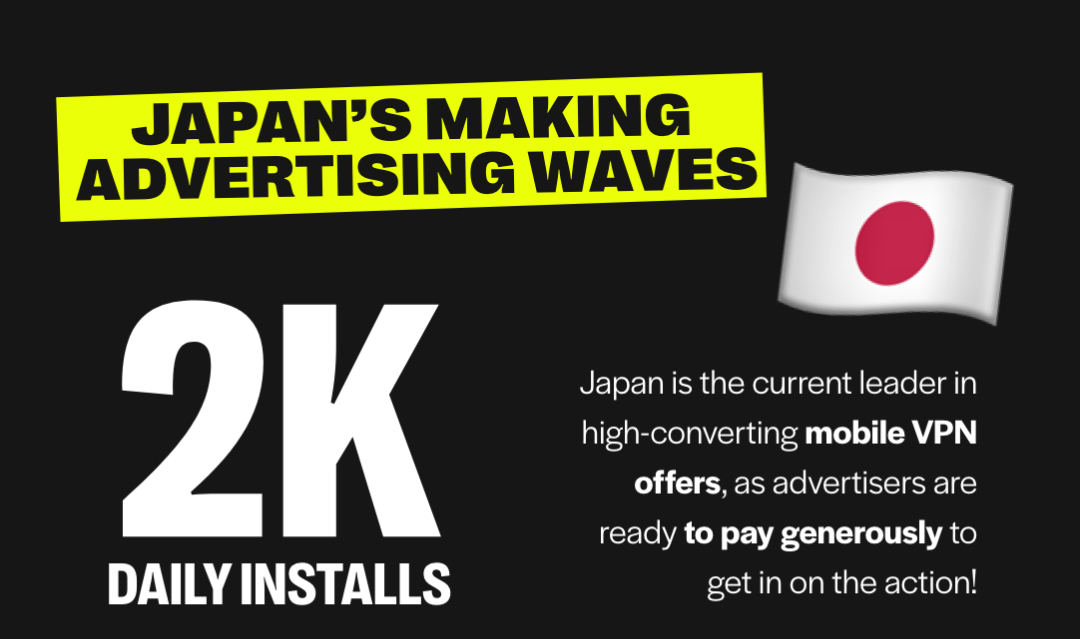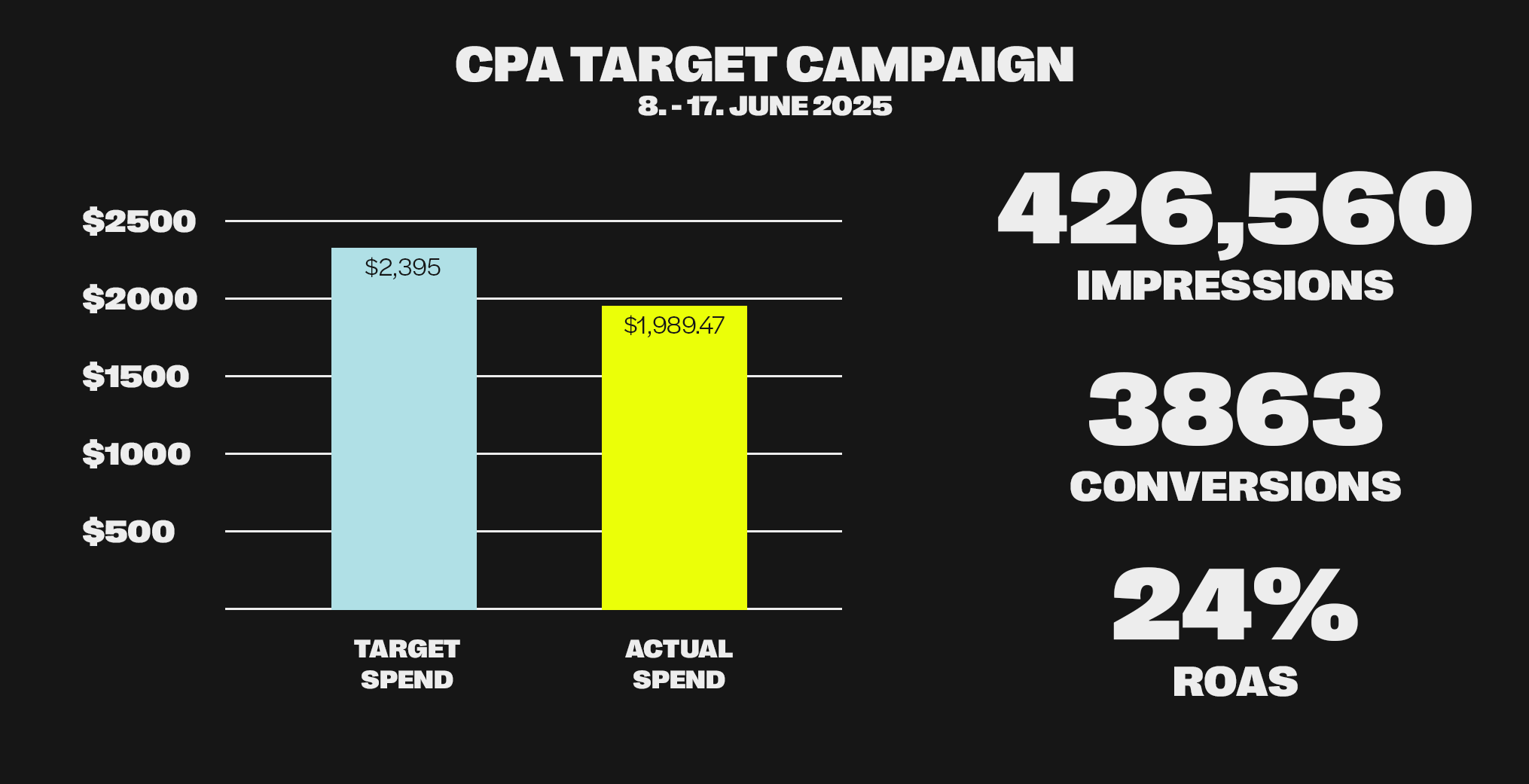
Case Study: VPN Advertising Campaigns
Who says VPN campaigns have to be expensive, over-saturated, or limited to the same old geos?
This case study flips that narrative on its head.
We’re about to break down a VPN campaign that quietly crushed it, with an insane return on ad spend, impressive cost-per-conversion numbers, and one strategic move that unlocked a previously underused region. Spoiler: it’s not the US, Canada, or the UK.

Using Adcash’s Pop-Under ad format, the team behind Lumos VPN took a sharp, data-led approach that opened up new high-volume markets in Asia, that VPN advertisers usually overlook.
Let’s unpack how they did it, without a six-figure burn rate or blind guessing.
What’s a VPN, Anyway?
If you’re not familiar, a VPN (Virtual Private Network) is like an invisibility cloak for your internet traffic. It encrypts your connection and hides your real IP address, letting users browse anonymously and access geo-restricted content.
Why the sudden boom? Simple: the internet’s getting more locked down. Streaming platforms are cracking down on access, countries are tightening online censorship, and people just want to protect their privacy. Whether it’s binge-watching a show that’s only available in another country or avoiding creepy tracking scripts, VPNs have become the go-to tool for digital freedom, and that demand is only growing.
Why VPN Ads Just Work
VPN ads hit differently because the need is real. People aren’t just browsing casually; they’re on a mission. Whether it’s unlocking content blocked in their region, keeping their browsing private, or dodging geo-restrictions like a digital ninja, VPN users are highly motivated and ready to act.
And here’s the kicker: most VPN apps are simple, fast, and come with free trials. That means low friction, high engagement. Add in the fact that users often have an emotional trigger – frustration over blocked content, concerns about privacy, or even just the desire to stream their favorite show or live sports while traveling, and you’ve got ads that don’t just sell, they solve a problem.
We’re also seeing a global shift in consumer behavior. People around the world are trying to save money, especially in Tier 3 markets where affordability often outweighs brand recognition. Users in these regions are actively searching for cheaper alternatives and are open to trying smaller or lesser-known VPN providers, especially when the product still delivers. Younger audiences, too, are moving to VPNs to watch sports, VOD content, anime, and other region-locked media without restrictions.
With better targeting capabilities, adaptable messaging, and a product that’s genuinely useful and budget-friendly, VPN campaigns convert like crazy.
Target Spend vs Actual Spend
Every smart campaign starts with a plan, and that includes how much you’re willing to spend to get a user through the door. With Adcash’s CPA Target model, advertisers set a desired cost per action (in this case, installs or registrations). The system then hunts down traffic that can deliver results at or below that target, automating your bidding to make the most of your budget.
Now, here’s the catch: setting a solid daily budget is crucial. Go too low, and your campaign won’t scale. Go too high without strategy, and you’ll burn through spend inefficiently. For most advertisers, the sweet spot to train the algorithm and win premium traffic sits around $500–$1000/day.
Just as important is your payout per event. If your payout is too low, your offer won’t be competitive enough to attract premium sources, no matter how good your budget is. To reach top-tier placements and quality users, your payout should reflect the current market conditions and offer enough margin to motivate high-value publishers to push your campaign.
On the flip side, CPM bidding is more manual, great for hyper-targeted zone control and fixed daily budgets on high-performing placements.
In this campaign, our target spend was set at $2,395, but what actually happened might surprise you. Not only did we come in under budget at $1,989.47, we did it while actively scaling. And here’s the kicker: Japan completely outperformed the US. Historically, you’d bet on Western markets like the US, Canada, or the UK to carry the load for VPN installs. But this time? Japan was printing conversions like a vending machine. Even better, the advertiser’s goal was to pay $0.61 per install, but we delivered at just $0.52. Lower cost, higher volume, and a market twist no one saw coming.
Start with CPM bidding to gather valuable performance intel. Then, flip the switch to CPA Target on the best-performing zones for maximum cost-efficiency. If a zone’s printing conversions? Build a broad enough whitelist so the algorithm has enough traffic to work with, and don’t be shy about bidding higher than the competition on those top performers. If you’re unsure about the scope of your whitelist, reach out to your account manager for guidance.
Campaign Breakdown
Now that we’ve covered the ‘what’ and ‘why’ of VPNs, let’s break down how this campaign got real results. Lumos VPN didn’t just ride the wave – they tested smart, scaled sharp, and let data lead the way.
Campaign Setup
| Ad Format | Bid Type | Devices | OS Targeting | Geo Targeting | Vertical Targeting | Supply |
|---|---|---|---|---|---|---|
| Pop-Under | CPA Target | Mobile | newest iOS versions | Japan | All + adult | All (Adcash+RTB) |
Lumos VPN kicked things off with a CPM campaign to explore performance across the board. Japan quickly emerged as a high-potential geo, showing strong impressions. By enabling all traffic sources (Adcash Direct + RTB) and targeting every website category, they collected valuable data without limiting the algorithm. They built a whitelist of top-performing zones in Japan and switched to CPA Target bidding. This allowed for more aggressive bids on proven traffic, letting the algorithm zero in on quality installs while keeping costs efficient and performance high
Pop-Under ads were the MVP here (because nothing beats raw reach + intent combo). Other formats like banners and in-page push were available for testing too, but Pop-Under carried the load for installs. The key move? Set the highest possible bid per install you can stomach. That way, the algorithm learns fast, grabs better zones, and doesn’t waste time scraping the bottom of the barrel.
Once the campaign picked up steam, the focus shifted to trimming the fat. Underperforming zones were blacklisted, but not excessively. Why? Because over-blacklisting suffocates the algorithm. Keep it lean. Sometimes, the algo’s so on-point, you don’t even need to lift a finger.
This campaign zeroed in on iOS mobile traffic, targeting only the latest versions for quality conversions. GEO-wise, we went full-on Japan, with coverage across all regions and precise filters based on ISP/browser performance as needed. All verticals were allowed (mainstream + adult), making the traffic pool as wide as possible for faster optimization.
Campaign Results

| Impressions | Conversions | Revenue | Spending | eCPM | eCPA | Target Cost | Real Cost |
|---|---|---|---|---|---|---|---|
| 426,560 | 3863 | $2474.10 | $1989.47 | $4.664 | $0.515 | $0.62 | $0.52 |
The Takeaways
Let’s break it down. If you’re running a VPN campaign, these are the moves that separate the amateurs from the pros:
Start broad
Target all website categories, all zones, all devices. Let the algorithm find the gold.
Track everything
Don’t stop at installs, set up conversion tracking for free trials, upgrades, and full-on purchases.
Begin with CPM bidding
To gather initial data fast. Test creatives, placements, and geos without algorithm restrictions.
Switch to CPA Target
Once the winners emerge. It’s hands-off optimization that auto-adjusts bids to keep your ROI strong.
Use frequency and zone capping
One impression per user per day keeps the campaign lean. Got bad zones? Blacklist them, but only when necessary.
Let your campaign run 24/7
Don’t cut traffic off at night. Dayparting works best when it’s backed by real data.
Test. Then test some more
CPM vs CPA Target. Pop-under vs banners. English vs local language (yes, Japanese pre-landers crushed here). Use strong, clear CTAs and localised offers.
Budget smart
$500–$1000/day is your sweet spot for algorithm learning and scaling up quickly.
Keep it fresh
Rotate creatives, refresh pre-landers, and highlight the latest features, deals, or bonuses. Nobody clicks stale ads.
The more events you track, the better. Accurate, detailed data helps Adcash’s system optimize your campaign with maximum precision.
Bottom Line
Now that you know how this game is played, it’s time to create your own.
This case study proves it: VPN campaigns don’t just thrive in Tier 1 geos, they’re exploding in emerging markets like Japan. With fresh publisher inventory constantly joining the Adcash platform, now is the perfect time to get in the game.
If you’ve got a compelling VPN offer, strong creatives, and a solid tracking setup, we’re ready to help you scale. Bonus: you’ll get a dedicated account manager to guide you every step of the way.
Ready to launch your next VPN campaign?
Reach out to Katerina Wilde, Senior Advertiser Manager, and let’s make it happen.
Share
Learn more
Explore our resources and discover how to cultivate wisdom in an information-saturated world.
FAQ
Maximizing earnings shouldn’t mean annoying your visitors. The key? Smart ad placement and quality formats.
Use pop-under ads instead of intrusive pop-ups to keep the user journey smooth.
Limit interstitial ads to natural breakpoints in content flow.
Optimize push ads so they feel native rather than disruptive.
Work with a trusted ad network for publishers (like Adcash) that provides real-time optimization and non-intrusive ad delivery.
With the right balance, you can monetize your website without driving users away.
Pick a solid advertising platform that connects you with top publishers (hint: Adcash). Whether you want pop-up ads, display banners, native ads, or video ads, we make it simple. Set your budget, target the right audience, and launch. Our adserver and programmatic advertising platform handle the heavy lifting – real-time analytics, smart ad optimization, and laser-focused targeting to maximize your ROI.
